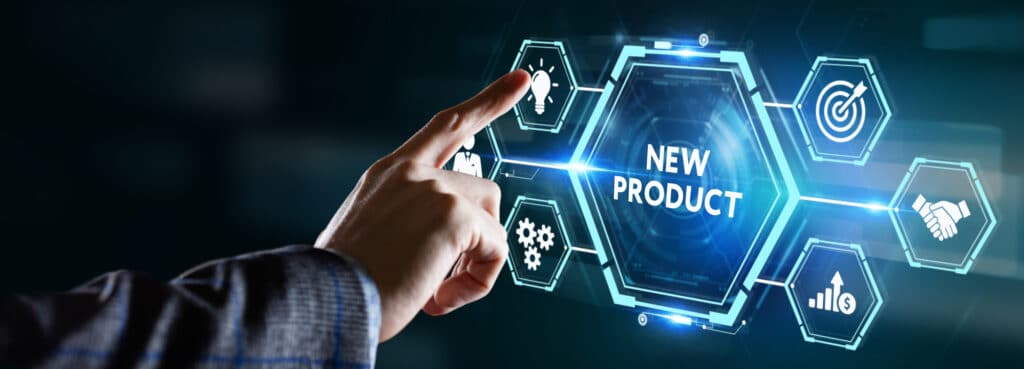PR Strategies for Launching a New Wellness Product
At Peppermint Soda, we’re experienced in effective PR strategies for launching new wellness products and brands, so here are some of our top tips on ensuring product launches succeed.
Launching a new wellness product in the UK market can be challenging, especially as the wellness market has boomed over the past decade, with many more people now interested in health and well-being. The wellness industry has seen significant growth as consumers increasingly seek products that enhance their physical and mental health. With multiple brands competing for attention across the market, a successful PR strategy is essential to ensure a new product stands out with its target audience.
At Peppermint Soda, we’re experienced in effective PR strategies for launching new wellness products and brands, so here are some of our top tips on ensuring product launches succeed.

1 – Understanding the market and target audience
As with all PR campaigns, it’s crucial to understand the market and target audience deeply. Identifying the main consumers’ demographics, needs, and preferences will inform the messaging, positioning, and tactics used in the campaign. This involves conducting market research, analysing competitor products, and understanding consumer behaviour trends in the wellness sector.
Example: Peleton
Peloton is an excellent example of a health and wellness brand that prioritises its community in its marketing approach. The company effectively creates and distributes content, showcases customer accomplishments on social media, and provides an exclusive Facebook group for its users.
2. Developing a Unique Value Proposition (UVP)
Establishing a unique value proposition (UVP) is vital to making a product stand out in a busy market. This UVP should highlight what sets the product apart from others available. This could be a unique ingredient, sustainable packaging, scientific evidence behind its creation, or a brand-new concept. A clear UVP will create the base for all PR messaging.
Example: Wild Deodorant
Wild, a sustainable deodorant brand, launched in the UK with a strong UVP centred on eco-friendliness, with refillable, plastic-free packaging. Wild’s commitment to sustainability and its fresh, natural ingredients resonated with environmentally conscious consumers, helping it carve out a niche in the wellness market. The brand’s UVP was consistently highlighted in its PR campaigns, earning it significant media coverage and consumer interest.
3. Crafting a compelling brand story
A compelling brand story can grab audiences and create an emotional connection with the product. Brand stories should communicate the brand’s mission, values, and the inspiration behind the product. Things like the founder’s personal journey, behind-the-scenes personal experiences or sharing customer testimonials can add authenticity to the story narrative and help to pull in audiences.
Example: Huel
Huel, a famous UK-based meal replacement brand, effectively leveraged its story of creating a nutritionally complete, convenient, and environmentally sustainable food solution. Huel’s founder, Julian Hearn, shared his reasons for launching the brand, which resonated with busy professionals and health enthusiasts seeking a balanced diet without compromising on convenience. The story was prominently featured in press releases, media interviews, and social media content, contributing to Huel’s strong market presence.
4. Partnering with influencers
Since social media has so much leverage, influencer marketing has become a powerful tool across PR campaigns, especially in the wellness industry. As consumers increasingly look to trusted figures for product recommendations, collaborating with influencers who align with the brand’s values can help reach a wider audience and build credibility.
Example: Estrid Razors
Estrid, a razor company committed to challenging beauty norms and promoting self-love, has collaborated with Carys Whittaker as part of its influencer campaigns. Estrid is known for its eco-friendly and cruelty-free razors, positioning itself as a brand that values inclusivity and empowerment. By partnering with Carys Whittaker, a popular influencer known for her relatable lifestyle content, focusing on body positivity, fashion, fitness, and motherhood with an unfiltered approach to beauty and self-care, Estrid taps into her influence and ability to connect with her followers on a personal level.
Carys’s endorsement of Estrid products goes beyond just promoting razors; she integrates the brand’s values of body positivity and embracing natural beauty into her content. Her posts often show how easy it is to use Estrid’s products, aligning with her message of self-acceptance. This partnership highlights how influencers like Carys can effectively convey a brand’s ethos to their audience, making campaigns more authentic and engaging.
5. Media coverage and product reviews
Securing media coverage is the key to a successful PR strategy. Positive product reviews in target publications can significantly enhance credibility and brand awareness. Creating relationships with journalists, editors, and bloggers who cover the wellness sector can help provide brilliant coverage with media outlets by sending out product samples, press kits, and exclusives.
Example: No.1 Living Kombucha (now One Living)
Founded by former rugby player Jonny Wilkinson in 2018, No.1 Living Kombucha quickly gained media attention in the UK wellness market. The brand leveraged Wilkinson’s celebrity status and offered exclusive interviews and product samples to crucial health and wellness publications. The resulting media coverage helped boost brand recognition and educated consumers on the benefits of kombucha, contributing to a successful launch. Due to its success, it rebranded to One Living in June 2024 to shift its brand messaging.
6. Hosting launch events
Launch events are a great way of showcasing a new product, virtually or in person. Live events can create excitement and provide an opportunity for the consumers or media outlets to get up close and personal with the product and brand and get a more one-on-one experience. It gives a chance to ask questions and find out more, meet the founders and brand ambassadors, and try the product if it is an in-person event. These Launch Events should be designed to reflect the brand’s ethos and provide a memorable experience that encourages those who attend to share on social media.
Example: 23andMe
23andMe, a company providing genetic testing services, hosted an event in New York City, allowing individuals to gain insights into their DNA. This event was a rare chance for the public to attend an event where DNA testing could occur, making it exciting and rare enough for the media to cover it.
7. Creating engaging content and storytelling
Content marketing is a powerful way to engage the audience and communicate the benefits of a new wellness product. High-quality content that educates inspires and can help establish the brand as a thought leader in wellness. Blog posts, videos, infographics, and social media content should be tailored to address common consumer pain points and showcase the product’s unique features.
Example: Vitl
Vital, a personalised vitamin subscription service, excels in content marketing by creating engaging, educational content on nutrition and wellness. The brand’s blog, social media channels, and email newsletters are filled with expert tips, health advice, and user stories that resonate with its audience. By positioning itself as an authoritative source of wellness information, Vitl has built trust and driven consumer interest in its products.
8. Utilising social media and paid advertising
Social media is essential for wellness brands to connect with their audience, share brand stories, and generate buzz with influencers and stand-alone content. A well-executed social media strategy should include organic posts, paid advertising, influencer collaborations, and user-generated content. Social media advertising allows brands to target specific demographics, making it easier to reach the right audience.
Example: Fabletics UK
Fabletics, the famous activewear brand co-founded by actor Kate Hudson, utilised social media and paid advertising to drive awareness of its wellness-focused clothing line. A mix of Facebook and Instagram ads, influencer endorsements, and interactive social media content, such as fitness challenges and giveaways, supported the brand’s UK launch. This multi-faceted approach helped Fabletics establish a solid social media presence and attract a dedicated UK customer base.
9. Leveraging User-Generated Content (UGC)
User-generated content, such as customer testimonials, social media posts, and video reviews, can be highly persuasive in the wellness market. Encouraging satisfied customers to share their experiences with the product can enhance authenticity and provide social proof. Brands can incentivise UGC through giveaways, referral programs, and social media contests.
Example: The Nue Co.
The Nue Co., a wellness brand known for its clean supplements, has effectively harnessed UGC as part of its PR strategy. The brand encourages customers to share their wellness journeys on social media using branded hashtags, which are then featured on The Nue Co.’s platforms. This approach boosts engagement and builds a community of loyal customers who advocate for the brand.
10. Building a practical Press Kit
A comprehensive press kit is an important PR tool for any product launch. It should include a press release, high-quality product images, the brand story, founder bios, and any relevant research or data that supports the product’s claims. A well-designed press kit makes it easy for journalists and influencers to access the information they need to write about the product.
Example: Nourished
Having worked with gummy supplement brand Nourished on its latest launch of Menopause Mini Stack, we distributed the press kit to critical media outlets, helping the brand secure widespread coverage in health and wellness publications. This comprehensive approach ensured that Nourished’s key messages were consistently communicated across all channels. Through this, journalists received all the information in one go, ready to communicate to their audiences.
11. Using research to back any claims
Consumers in the wellness market are often sceptical of new products, making data and scientific research crucial for establishing credibility. PR campaigns should emphasise the product’s efficiency through clinical studies, testimonials, and endorsements from health professionals. Presenting factual evidence can build trust and persuade consumers who initially weren’t too sure.
Example: Symprove
Symprove, a UK-based probiotic supplement, has successfully leveraged scientific research to support its product claims. The brand invests heavily in clinical studies and prominently features the results in its PR materials. This emphasis on scientific validation has helped Symprove differentiate itself in the crowded probiotic market and gain the trust of consumers and healthcare professionals alike.
If you’ve created a strategy following all of those steps, you’ll, of course, want to measure your PR success! Measuring the success of a PR campaign is an ongoing part of any PR strategy, and it helps with understanding how the campaign is performing against KPIs, whether that’s media coverage, social media engagement, website traffic, or sales data. Tools like Google Analytics, social media insights, and PR software can provide valuable data to assess the impact of the launch.
Launching a new wellness product in the UK requires a well-crafted PR strategy that encompasses understanding the market, defining a unique value proposition, and effectively telling the brand’s story. Using influencer partnerships, securing media coverage, hosting engaging events, and creating high-quality content are all essential elements that contribute to a successful launch.
Incorporating social media, paid advertising, and user-generated content can amplify reach and build brand credibility.
Read all about it...
LATEST NEWS

10 Ways Professional Video Content Boosts Engagement Online

Video Content Production vs. Podcast Creation: Which Works Best for Your Brand?


